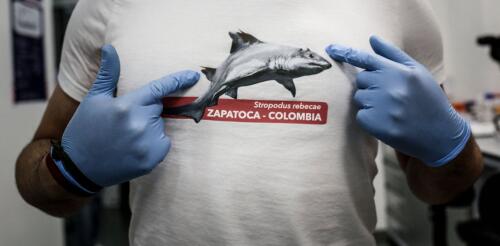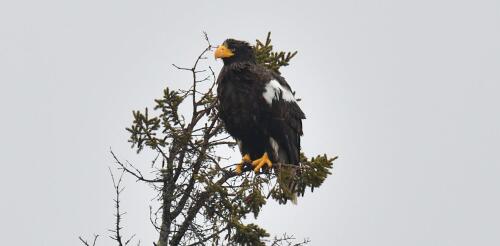Genetics
Did you know that the bananas you eat today are not the same type as the ones people were eating a few generations ago? The banana you might have had with your breakfast today is a variety called the Cavendish banana, while the one that was in grocery stores up to the 1950s was a variety called Gros Michel, which was wiped out by a disease called Fusarium wilt of banana, or FWB. FWB of Gros Michel was caused by Fusarium oxysporum race 1, a fungal pathogen that affects bananas. This fungal infection kills a plant by occupying its vascular system, blocking water and mineral transportation. You would be hard-pressed to find a Gros Michel banana in American supermarkets today. krares/iStock via Getty Images Plus Plant biologists developed the Fusarium-resistant Cavendish variety to replace the Gros Michel. Yet, over the past few decades, a resurgence of FWB caused by a different strain of the same fungu...
Curious Kids is a series for children of all ages. If you have a question you’d like an expert to answer, send it to curiouskidsus@theconversation.com. Why are some people faster than others? – Jon, age 14, Macon, Georgia Usain Bolt, the world’s fastest person, ran a 100-meter sprint at a speed of 23.35 miles per hour (37.57 kilometers per hour). That’s mind-blowingly fast for a human. It’s about the same speed as cruising in a car through your neighborhood or in a school zone. It might not seem that fast when you’re in the car, but for a person? Few runners in the world can even come close. There are several reasons why some people can run very fast while others tend to run more slowly. Genetics – the traits you inherit from your parents – play a role, but so do your choices and experiences. As pediatric exercise scientists, we create and e...
Human fear of sharks has deep roots. Written works and art from the ancient world contain references to sharks preying on sailors as early as the eighth century B.C.E. Relayed back to land, stories about shark encounters have been embellished and amplified. Together with the fact that from time to time – very rarely – sharks bite humans, people have been primed for centuries to imagine terrifying situations at sea. In 1974, Peter Benchley’s bestselling novel “Jaws” fanned this fear into a wildfire that spread around the world. The book sold more than 5 million copies in the U.S. within a year and was quickly followed by Steven Spielberg’s 1975 movie, which became the highest-grossing film in history at that time. Virtually all audiences embraced the idea, depicted vividly in the movie and its sequels, that sharks were malevolent, vindictive creatures that prowled coastal waters seeking to feed on unsuspecting bathers. But “Jaws”...
Cranberries are a staple in U.S. households at Thanksgiving – but how did this bog dweller end up on holiday tables? Compared to many valuable plant species that were domesticated over thousands of years, cultivated cranberry (Vaccinium macrocarpon) is a young agricultural crop, just as the U.S. is a young country and Thanksgiving is a relatively new holiday. But as a plant scientist, I’ve learned much about cranberries’ ancestry from their botany and genomics. New on the plant breeding scene Humans have cultivated sorghum for some 5,500 years, corn for around 8,700 years and cotton for about 5,000 years. In contrast, cranberries were domesticated around 200 years ago – but people were eating the berries before that. Wild cranberries are native to North America. They were an important food source for Native Americans, who used them in puddings, sauces, breads and a high-protein portable food called pemmican – a carnivore’s version of an ene...
The Steller’s sea eagle is one of the largest and most aggressive raptors in the world. With an 8-foot wingspan and striking white markings, these birds tower over their bald eagle cousins. Steller’s are sublime, but they aren’t beautiful in the way people often sentimentalize animals. Most adult Steller’s survived by beating their weaker sibling to death in the nest within weeks of birth and were rewarded for their aggression by nurturing parents. No wonder they can fight off brown bears and hunt on the sea ice of the Russian Arctic. Since mid-2020, one individual Steller’s sea eagle has drawn national media attention because of the vast distances it has traveled – from Russia’s Kamchatka Peninsula to Alaska, then to Texas, eastern Canada, New England, and most recently, a reported sighting on May 2, 2023 in Newfoundland – and the extreme lengths to which birders are going to glimpse it. Biologists have learned remarkable th...




